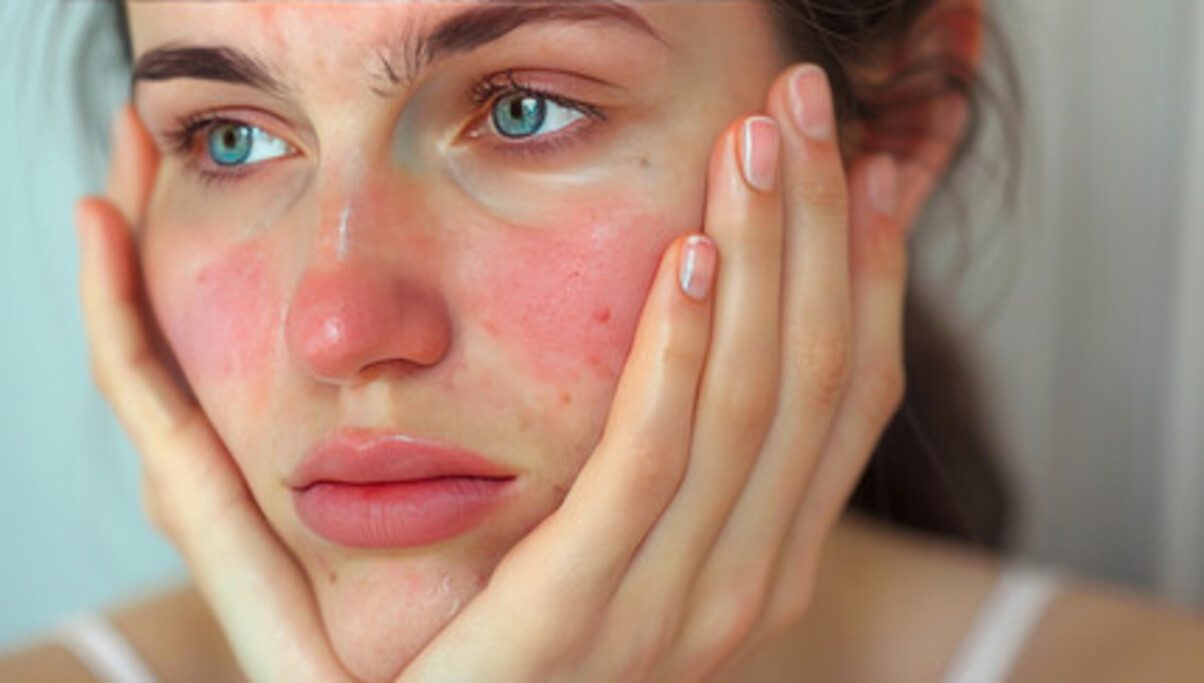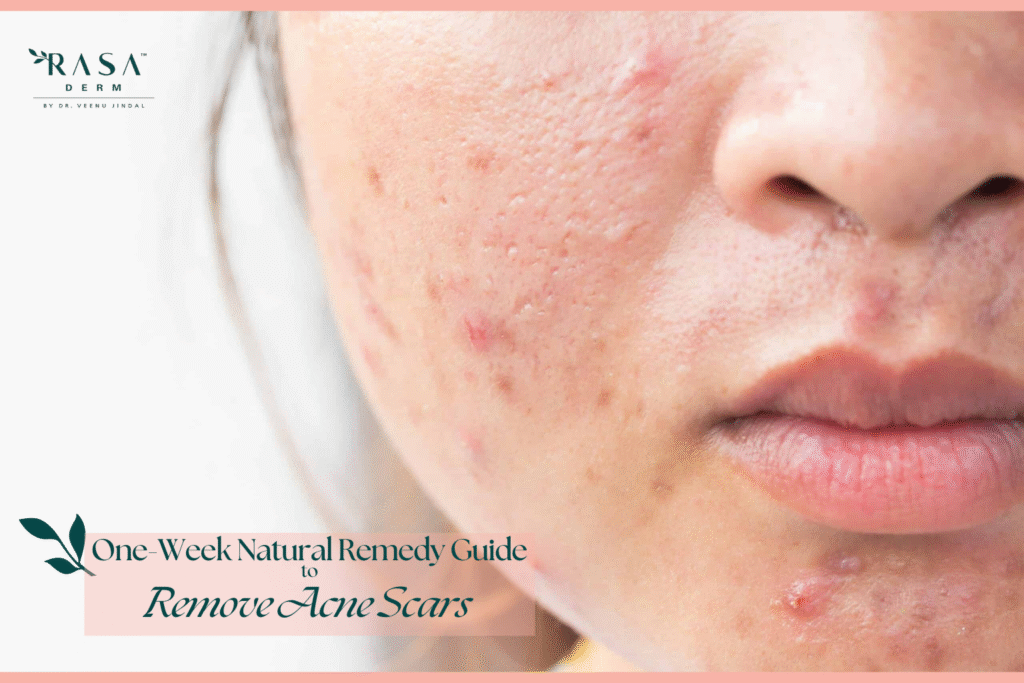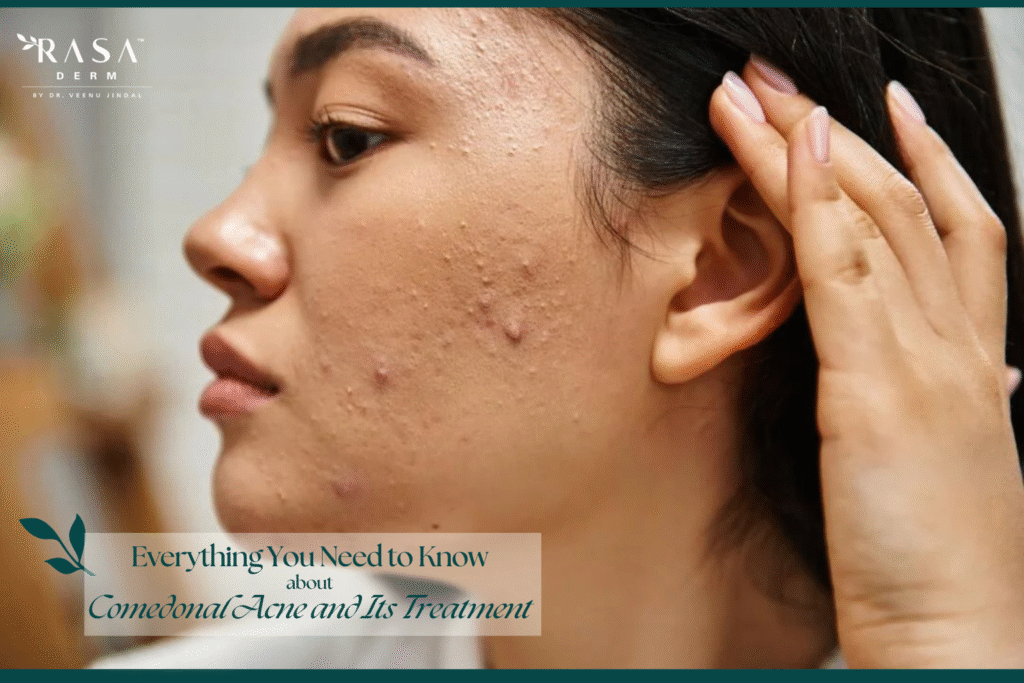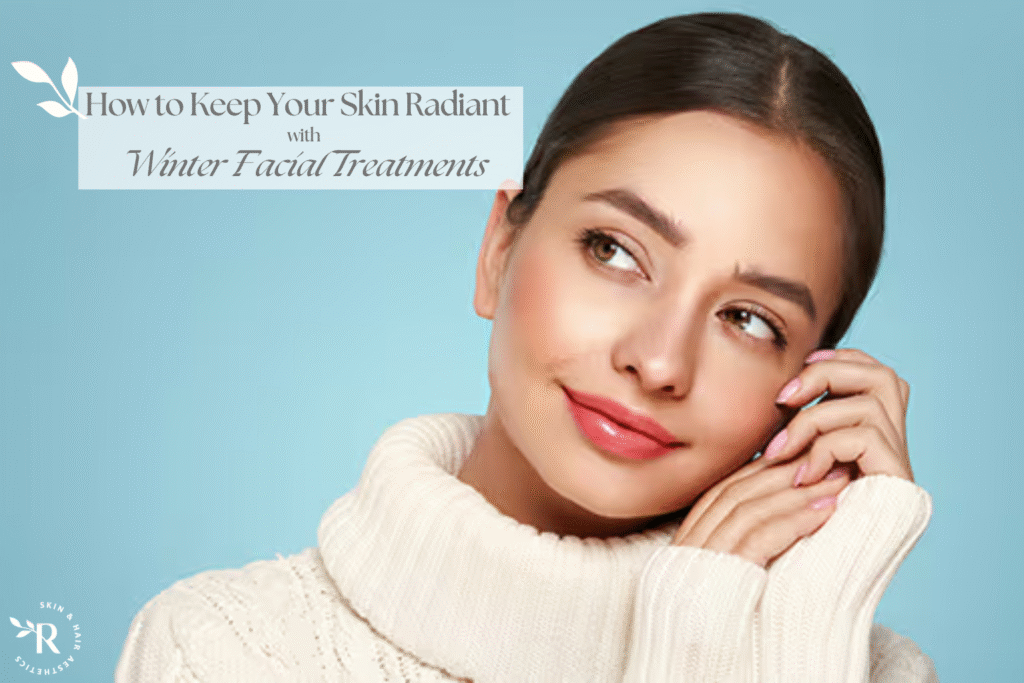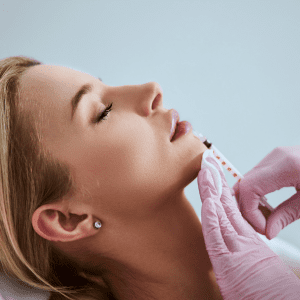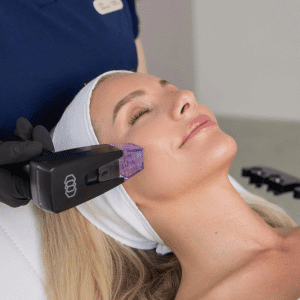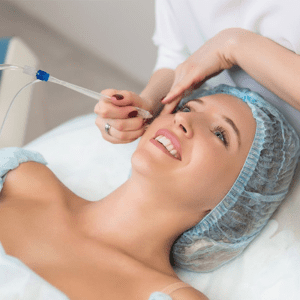Rosacea is a long-term skin disease that mostly affects the face. It makes the skin red, shows blood vessels, and sometimes forms bumps that look like acne. Even though no one knows for sure what causes rosacea, study shows that Demodex mites, which are tiny organisms that live on human skin, may play a big part in starting or making the condition worse. It is important to understand the connection between Demodex mites and rosacea in order to treat and handle it effectively.
This blog post will talk about what causes rosacea, what part Demodex mites play, and the different ways to treat it, including both medical and natural approaches.
What Do Demodex Mites Look Like?
Demodex mites are very small harmful bugs that live in hair shafts and oil glands on people’s skin. Demodex bugs that live on people come in two main types:
- Demodex folliculorum, which lives in hair cells for the most part.
2: Demodex brevis , which lives in the oil glands.
Most people don’t have a problem with having a few Demodex mites on their skin, but having too many of them has been linked to skin problems like acne. People think that when the number of Demodex goes above what is normally found, it can cause an inflammatory reaction that makes rosacea symptoms worse.
Demodex mites are very small—only 0.1 to 0.4 millimeters long—and can’t be seen with the human eye.
– Eat dead skin cells and the oils that your skin makes.
– More often found on the face, especially around the chin, nose, cheeks, and forehead.
Demodex mites are linked to rosacea.
Researchers have found that people with rosacea have more Demodex mites on their skin than people who don’t have the disease. Even though mites may not directly cause rosacea, their presence can make people more likely to get an immune reaction, which can cause inflammation and the other symptoms of rosacea.
When the mites eat and die, they release germs and other allergens that can irritate the skin even more and make the symptoms worse. The inflammation caused by the body’s immune response to these mites can result in: – Persistent facial redness (erythema).
– Pustules, which look like acne.
– Sensitivity and burning in the skin.
Researchers are still trying to figure out why some people get a lot of Demodex mites and others don’t. But it’s likely that things like a person’s immune system sensitivity, genetics, and their environment all play a part.
Why people get Rosacea
Rosacea is caused by many different things, and different things can set off flare-ups. Here are some of the main reasons and factors that led to this:
- Genetic Predisposition : Having rosacea may be linked to your family background. Rosacea is more likely to happen to people whose family members have had it.
- Immune System Dysfunction : Demodex mites or bacteria on the skin may cause inflammation if your immune system is overloaded.
- Environmental Triggers: Some things can make rosacea symptoms worse, such as
– Being in the sun
— Very hot or very cold weather
– Swelling or wind
– Hot drinks and spicy foods
– Drinking alcohol, mostly red wine
- Skin Microbiome Imbalance: Rosacea may also be caused by an imbalance in the skin’s natural bacteria, especially when bacteria from Demodex mites cause an immune reaction.
Vascular Abnormalities: Rosacea is often linked to telangiectasia, which is the appearance of blood vessels. This is because of a problem with the face’s blood vessels.
Rosacea Signs and Symptoms
People who have rosacea often start out by blushing more easily than other people. This redness gets worse over time, and other signs may start to show up. Some common rosacea symptoms and signs are:
– Redness: Redness that doesn’t go away, usually on the nose, cheeks, chin, and forehead.
bumps and pustules look like acne but aren’t caused by clogged pores. They are often mistaken for acne.
Blood Vessels That Can Be Seen: Broken capillaries can be seen on the skin’s surface.
Skin sensitivity means that your face feels like it’s burning, itching, or stinging.
As a result of ocular rosacea, some people experience eye discomfort, which can make the eyes dry, irritated, or red.
Different ways to treat Demodex mites and rosacea
Getting rid of the Demodex mite overgrowth and controlling the underlying skin symptoms are often necessary for rosacea treatment to work. Usually, treatment plans are made to fit each person’s symptoms and how bad their situation is.
- Topical Creams
Most of the time, topical treatments are the first thing that people try to get rid of Demodex mites and rosacea.
– Ivermectin Cream : Ivermectin is a drug that kills parasites, and it works by killing Demodex mites and lowering skin inflammation. It is often given when mite development is thought to be happening.
– Metronidazole Gel or Cream : Because it reduces inflammation and kills germs, metronidazole is often used to treat rosacea. It helps get rid of swelling and sores.
– Azelaic Acid : Azelaic acid lowers swelling and keeps bacteria on the face in check. It can also keep pores from getting clogged and lessen the look of bumps and pustules.
- Medicines taken orally
For more serious cases, you may need to take medicines by mouth.
– Oral antibiotics: Medicines like doxycycline or tetracycline may be given to lower swelling and the number of bugs present. Antibiotics like these are mostly used for their ability to reduce inflammation, not to treat illnesses.
Oral Ivermectin : If topical treatments aren’t working, oral ivermectin can be used to go after Demodex bugs directly.
- Laser and light therapies
At Rasa Derm, you can get advanced laser treatments to get rid of redness and blood vessels that you can see.
– Pulsed-Dye Laser (PDL): PDL targets and shrinks blood vessels that can be seen, making redness and broken capillaries look better.
– Intense Pulsed Light (IPL): IPL treatment can make your face less red by focusing on blood vessels just below the skin’s surface.
- “Natural and Home Remedies”
Even though natural treatments shouldn’t be used instead of medical care, some people find that home cures help calm their skin and lessen flare-ups.
– Tea Tree Oil: Tea tree oil kills germs naturally and can help lower the number of Demodex mites. But it needs to be mixed correctly so that it doesn’t irritate the skin.
– Aloe Vera : The gel from aloe vera plants can soothe sensitive skin and lower its redness because it reduces inflammation.
– Chamomile Compresses: Putting a cool chamomile compress on red, irritated skin can help calm it down and ease the symptoms of rosacea.
– Probiotics: Taking probiotics by mouth or putting them on the skin may help balance the skin microbiome, which can lower inflammation and make the skin healthier generally.
- Making changes to your lifestyle
To control rosacea, you usually need to stay away from things that make it worse.
– Sun Protection: Every day, use a broad-spectrum sunscreen because UV rays can make rosacea symptoms worse.
– Dietary Changes : Some people feel better when they stay away from spicy foods, wine, and hot drinks, which can cause flare-ups.
– Stress Management : Stress can make rosacea worse, so doing things that help you relax, like yoga, meditation, or frequent exercise, may help.
Final Thoughts
Mites called Demodex are a big reason why rosacea symptoms appear and get worse in many people. For rosacea to be managed well, both the mites and the underlying redness must be treated. Dr. Veenu Jindal treats rosacea in a way that is unique to each person. He uses modern medical therapies, changes to the patient’s lifestyle, and natural remedies to help the patient’s skin become clear and healthy again.
If you have rosacea or think Demodex mites might be making your symptoms worse, make an appointment at Rasa Derm right away. We can help you improve your skin health and quality of life by giving you expert advice and solutions that are made just for you.


